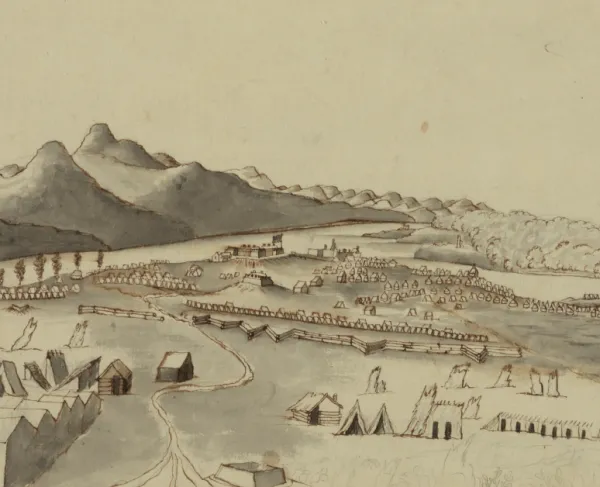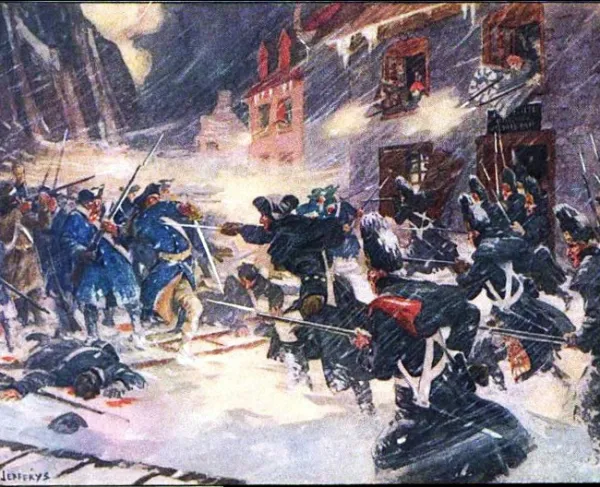Ticonderoga Seized: America Takes the Offensive

Fort Ticonderoga, Ticonderoga, N.Y.
In the 17th and 18th centuries, lakes and rivers acted as the highways and byways of the North American countryside. Situated at the confluence of Lake Champlain and Lake George, Fort Ticonderoga controlled access north and south between Albany, New York, and Montreal, Canada. This strategic location poised an attacker on an avenue of advance, while a defender could fortify strategic points along the waterways.
In 1755, the French had begun construction of a fort to protect the approach into their Canadian territory, and by 1757 a formidable star-shaped stone fort sprang to life. In 1758, it was heavily engaged by the British in the Battle of Fort Carillon during the Seven Years’ War (also known as the French and Indian War in North America). French defenses held, but the British seized the fort a year later and rechristened it Fort Ticonderoga, from an Iroquois word meaning “it is at the junction of two waterways.”
After the Seven Years’ War, the map of North America changed dramatically and with Canada now also part of the British Empire, the strategic significance of Fort Ticonderoga waned. All that changed after the Battles of Lexington and Concord.
Against the better wishes of the Continental Congress, which only wanted to act defensively at this point of the war, both Connecticut and Massachusetts dispatched forces to capture strategic Fort Ticonderoga. Colonel Ethan Allen and his “Green Mountain Boys,” who represented Connecticut, unexpectedly met up with a Massachusetts force led by the haughty but capable Colonel Benedict Arnold on May 9, 1775, near the fort. There had been no coordination between either colony, and the arrival of the respective forces was a shock to both officers. Nonetheless, the two men decided to work in concert to take the fort.
On May 10, 1775, the American force silently rowed across Lake Champlain from present-day Vermont and captured the fort in a swift, late-night surprise “attack.” In reality, the fort had fallen into disrepair, and the undersized garrison of some 45 British officers and men were taken wholly by surprise, surrendering without a single shot being fired after Allen supposedly demanded their capitulation “in the name of the Great Jehovah and the Continental Congress.”
Despite the lack of violence, it was the first offensive victory for American forces and secured the strategic passageway north, opening the way for the American invasion of Canada later that year. Allen received the lion’s share of the credit for the victory and quickly moved on to capture nearby Crown Point. Between the two installations, the Americans secured 78 cannon, six mortars, three howitzers, 18,000 pounds of musket balls and some 30,000 flints. The “Gibraltar of North America” gave General George Washington raw materials and fire power to challenge the British — albeit in a remote and inconvenient location.
Related Battles
1
48
18
5






